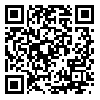Volume 31, Issue 200 (9-2021)
J Mazandaran Univ Med Sci 2021, 31(200): 61-72 |
Back to browse issues page
Download citation:
BibTeX | RIS | EndNote | Medlars | ProCite | Reference Manager | RefWorks
Send citation to:



BibTeX | RIS | EndNote | Medlars | ProCite | Reference Manager | RefWorks
Send citation to:
Nikzad N, Kazemi M, Abdoli F. Comparing the Effect of Foot Reflexology and Massage Therapy on Serum Bilirubin Levels in Neonates with Hyperbilirubinemia Treated with Phototherapy: A Randomized Clinical Trial. J Mazandaran Univ Med Sci 2021; 31 (200) :61-72
URL: http://jmums.mazums.ac.ir/article-1-16205-en.html
URL: http://jmums.mazums.ac.ir/article-1-16205-en.html
Abstract: (3238 Views)
Background and purpose: Phototherapy is the most common treatment for hyperbilirubinemia. Foot reflexology can possibly be suitable for reducing bilirubin levels by affecting meconium excretion. The aim of this study was to compare the effect of foot reflexology massage and whole body massage on bilirubin serum levels in neonates with hyperbilirubinemia.
Materials and methods: In this randomized clinical trial, 90 neonates undergoing phototherapy admitted to the neonatal ward in Rafsanhan Hospital were selected using convenience and purposive sampling. The samples were divided into two intervention groups and a control group. The intervention groups, in addition to phototherapy, received massage therapy or foot reflexology massage three times daily for 20minutes over two consecutive days.The control group received only phototherapy. Demographic characteristics were recorded and serum bilirubin levels were measured before, 24, and 48 hours after the intervention.
Results: Before the intervention, the mean bilirubin levels were 18.39±3.15, 18.51±2.24, and 18.23±2.44 in foot reflexology group, massage therapy group, and controls, indicating no significant differences between the three groups (P=0.923). But, 48 hours after the intervention, the mean bilirubin levels showed significant differences between the foot reflexology group (8.20±0.96), massage therapy group (8.67±0.68), and control group (9.33±1.22), (P<0.001). The post hoc test showed that foot reflexology could significantly reduce the mean bilirubin level compared with massage therapy and no intervention (P<0.001). Compared to the control group, the effect of massage therapy was significantly higher on reducing bilirubin level (P=0.027).
Conclusion: It seems that foot reflexology is more effective in reducing neonatal bilirubin level than massage therapy. However, nurses could use both foot reflexology and massage therapy as two non-pharmacological methods to treat neonatal jaundice along with phototherapy.
(Clinical Trials Registry Number: IRCT20180206038642N3)
Materials and methods: In this randomized clinical trial, 90 neonates undergoing phototherapy admitted to the neonatal ward in Rafsanhan Hospital were selected using convenience and purposive sampling. The samples were divided into two intervention groups and a control group. The intervention groups, in addition to phototherapy, received massage therapy or foot reflexology massage three times daily for 20minutes over two consecutive days.The control group received only phototherapy. Demographic characteristics were recorded and serum bilirubin levels were measured before, 24, and 48 hours after the intervention.
Results: Before the intervention, the mean bilirubin levels were 18.39±3.15, 18.51±2.24, and 18.23±2.44 in foot reflexology group, massage therapy group, and controls, indicating no significant differences between the three groups (P=0.923). But, 48 hours after the intervention, the mean bilirubin levels showed significant differences between the foot reflexology group (8.20±0.96), massage therapy group (8.67±0.68), and control group (9.33±1.22), (P<0.001). The post hoc test showed that foot reflexology could significantly reduce the mean bilirubin level compared with massage therapy and no intervention (P<0.001). Compared to the control group, the effect of massage therapy was significantly higher on reducing bilirubin level (P=0.027).
Conclusion: It seems that foot reflexology is more effective in reducing neonatal bilirubin level than massage therapy. However, nurses could use both foot reflexology and massage therapy as two non-pharmacological methods to treat neonatal jaundice along with phototherapy.
(Clinical Trials Registry Number: IRCT20180206038642N3)
Type of Study: Research(Original) |
Subject:
Nursing Education
Send email to the article author
| Rights and permissions | |
 |
This work is licensed under a Creative Commons Attribution-NonCommercial 4.0 International License. |







